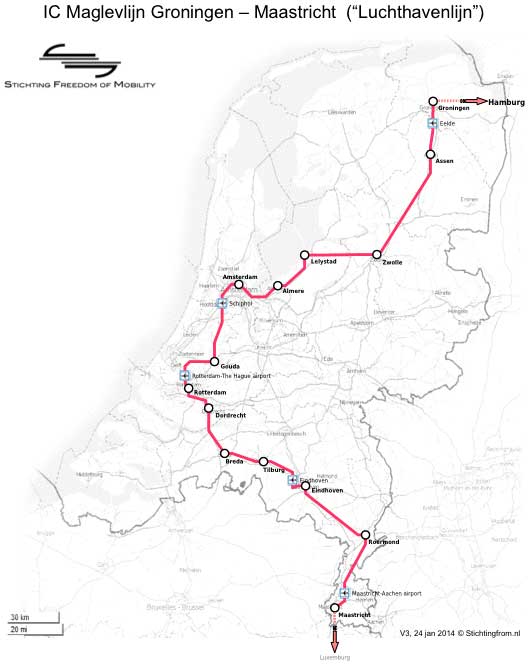Especially in these economic dwindling times, when present our vision we’re often asked “How much does it cost?”. But that is a question that can not be answered at this stage. This is only possible when the vision is worked out in detailed plans.
Even so, we still do not want to get bogged down in all kinds of social benefit cost analysis (MKBAs), which try to get a good score through various statistical side issues. That would only distract from the essence. Moreover, for some utilities, such as the army, it is not clear in advance what the value is – until you need it. The same goes for infrastructure.
It is clear to us that there is a large amount is involved. Like buying a house, city or our entire road network, too much to be not paid for in a single term. Yet we want mobility to remain affordable to the traveler. So instead of summing up the total costs only to call out “too expensive”, we propose a phased funding method where you only build what you can pay for:
- Reserve a national amount for making mobility better and sustainable. That can be a percentage of the national budget, for example, 4% (approximately € 5 billion per year). Possibly to be supplemented with European infrastructure subsidies, part of the profits of the participating companies (railways, airports), or from special bonds.
- Annually determine what part of the network will be addressed for this budget.
- Continue construction until a intercity connection is ready. Then deploy this section to generate revenue.
- Every year, continue like this until the entire network is completed. If that takes 50 years, so be it. Or shorter, or longer, depending on the economic situation being better or worse.
By initially renting rather than buying property, the start-up costs can be reduced. Once there is sufficient income, the property can be purchased.
The network requires energy. The right of way could also be used for a smart grid network. In that case, the grid operator (TenneT) can help pay for the renting the property.
First corridor
As the initial phase requires the largest investments (costs, but no income), it is important to begin with the most profitable section. In our estimation that would be the airport corridor. And specifically the section from Eindhoven airport, because its hinterland includes tens of millions of people and the current connections are poor. Connecting other airports to Schiphol enhances opportunities for the entire aviation. An extension to a German airport, for example Eindhoven via Venlo to Düsseldorf can be a good international start and may be eligible for a European grant.

